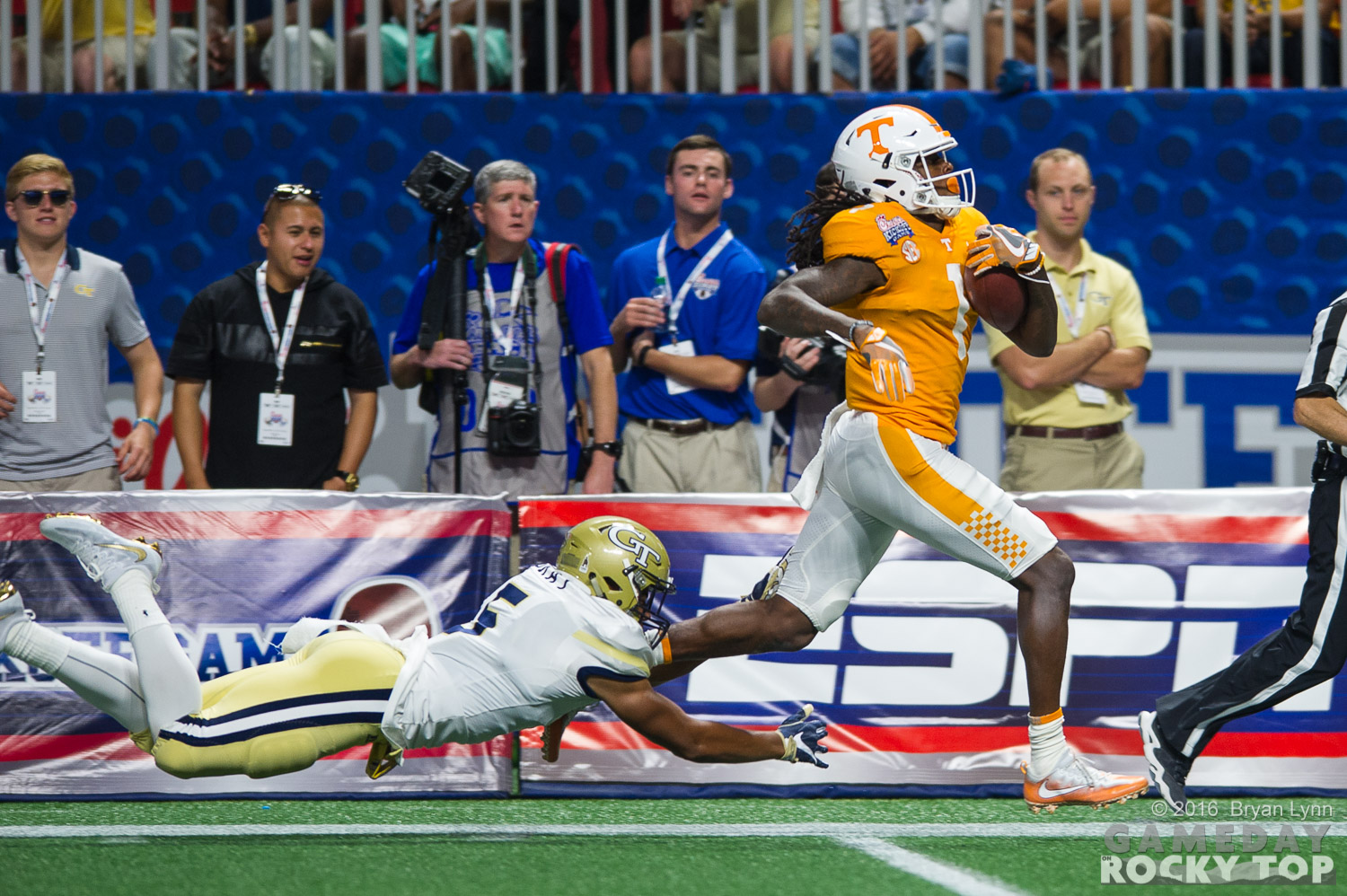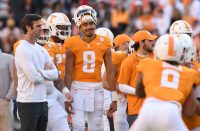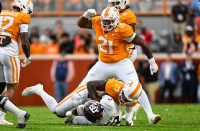(Or, what was Tennessee worst at last year?)
That’s a long list, as you might remember. Or, if you’re like me, you might not. Tennessee’s 2017 season became about the future after the Georgia loss. And when that future headed toward change soon after, it was easier to pay attention to potential new coaches every Saturday than document what Team 121 was doing.
So there’s an obvious joke here about this year’s team being able to show improvement basically everywhere; the 2017 Vols didn’t excel at anything in particular. But, thanks to the data from Sports Source Analytics, we can pinpoint a number of more specific ways the 2018 Vols can be better. Out of 130 teams nationally, these are the five categories Tennessee was statistically worst at in 2017.
Big Plays: 123rd in 20+ yard plays in 2017 (38 in 12 games)
Don’t remember any big plays from the Tennessee offense after the Georgia Tech game? That’s because there weren’t many. Only 38 plays of 20+ yards for the Vol offense was the lowest total since the injury-plagued 2011 season (36). Under Butch Jones the Vols were more explosive every season until last year, going from 46 20+ yard plays in 2013 to 55, 63, and 79 in 2016. But the bottom fell out without Josh Dobbs and under new offensive coordinator Larry Scott, cutting UT’s explosiveness almost literally in half.
Where will big plays come from in 2018? For what it’s worth, Marquez Callaway excelled during Quinten Dormady’s early tenure, catching eight passes for 198 yards and three touchdowns in the first three games of the year. We’re also familiar with the work of Jauan Jennings, who caught 11 passes for 250 yards against Florida, Georgia, and Texas A&M in 2016. The Vols could also use more explosiveness in the ground game; you may recall John Kelly showing plenty of that in the early going (38 for 269, 7.1 yards per carry against Georgia Tech and Florida) before injuries up front and the general ineffectiveness of the offense eliminated much of the possibility. Explosiveness is one of the most important factors for success; the Vols have lots of room for improvement.
Run Defense: 121st in yards per carry allowed (5.43)
By contrast, Jeremy Pruitt’s Alabama defense led the nation in yards per carry allowed last season at 2.72. Tennessee’s number swells to 5.60 yards per carry allowed if you take out the Indiana State game, and it wasn’t just Georgia Tech (6.22) who did the damage. Lost in the flames of an assumed coaching search were 8+ yards per carry performances by Kentucky and Missouri. That’s the sort of number you expect to see only when facing elite competition: 2011 Arkansas, 2013 Auburn, and 2016 Alabama all went for 8+ against the Vols. But, alarmingly, so did Kentucky…in 2016 and 2017.
It was the worst performance against the run by a Tennessee defense in at least the last ten years, and probably far beyond that. Some old standbys – being more physical, defenders swarming to the ball, etc. – can help, but the Vols also need more size and more options up front. There’s some hope, especially if you still value recruiting stars, in the starting lineup, but little proven depth behind them. We’ll see how big of an issue that becomes if teams continue to simply pound away at Tennessee late in the game. Again, nowhere to go but up.
Negative Plays: 121st in TFLs allowed (7.42 per game)
Not only did the Vols fail to create explosive plays, they were also one of the worst teams in the country in the opposite direction.
Tackles for loss allowed are one part offensive line and one part scheme. You can track strong (2013) and weak (2010, which was most of the 2013 line as freshmen) offensive lines fairly well through this stat alone. But if it felt like the Butch Jones offense went backwards more than usual, the stats back up the perception. After allowing only 5.25 TFLs per game in 2013 (37th nationally), the Vols were next-to-last in the nation in TFLs allowed in 2014 (7.77 allowed). The only offense behind them was, you guessed it, Wake Forest.
Even nationally competitive Vol squads in 2015 (7.08 TFLs per game allowed, 108th nationally) and 2016 (5.54, 53rd) went backwards more than their fair share, before things bottomed out last fall. I think the scheme change will help things by itself here: USC was 35th nationally in TFLs allowed last season. Under Tyson Helton the Vols will probably be doing less behind the line of scrimmage; hopefully that also translates to more explosive plays.
Third Down: 120th in conversion percentage (30.67%)
When you can’t be explosive and you go backwards a lot, you don’t do well on third down. Two years after being one of the best teams in the nation on third down in 2015 (45.97%, 21st nationally), the Vols were one of the worst teams in the nation on third down last fall.
For what it’s worth, Tennessee went 1-of-12 against both Georgia and Alabama on third down, meaning the Vols were at 34.5% against the rest of the schedule. Not great, but not the worst in the land either. The Vols were entirely ineffective against the Dawgs and Tide, which means yet again there’s plenty of room for progress this fall. But you’ll also find a 2-of-13 performance in there against Southern Miss. The entire offense has plenty of room to grow, and the best way to convert on third down is to be better on first and second down. But for the Vols to be successful in 2018, they’ll need to be better in crucial third down situations as well.
Interceptions: 119th nationally (5 in 12 games)
Some of this is a byproduct of teams getting ahead of the Vols and not needing to throw it; Tennessee saw only 279 pass attempts from the opposition, the fourth-fewest nationally. But that’s still just five interceptions in 279 tries, just 1.8% of passes. Even when taking a number of beatings in 2013 and 2011, the Vols still had interception rates above 2%.
Corner is one of the biggest question marks for this year’s team, and any group looking to overachieve will need to create turnovers to get there. Pruitt’s Bama defense had 19 interceptions last year; just putting guys in better position to make a play can help this defense show significant improvement over last year.




